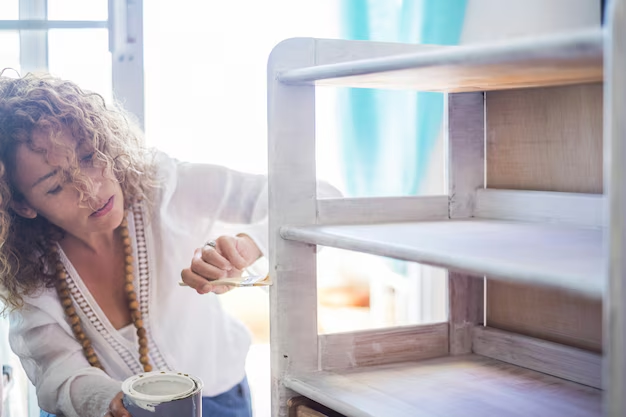Transforming Trash into Treasure: Innovative DIY Home Repair Solutions
Who would have thought that the dusty relics cluttering your attic could be the secret weapons in your home repair arsenal? As sustainability gains traction and creativity takes center stage, repurposing old items isn't just a charming nod to the past—it's a practical approach to modern home maintenance. Let’s dive into the world of upcycling and discover how everyday items can be given new life, all while enhancing your living space.
🌿 Why Repurpose? Understanding the Value
Before embarking on any project, it’s crucial to recognize the many benefits of repurposing. It’s about more than saving a few dollars; it’s about creating value, minimizing waste, and adding a unique touch to your surroundings.
Economic Savings
Home repairs can be costly, but repurposing items cuts down the expenses associated with buying new materials. Items that would normally be discarded can become crucial components in repairs and upgrades.
Environmental Impact
Repurposing supports sustainability by reducing waste and lessening the demand for new materials. This environmentally friendly practice contributes to resource conservation, benefiting the planet.
Personalization and Creativity
Repurposing allows for personalized creations that reflect your style. Each project presents an opportunity to infuse creativity into your home, making it uniquely yours.
🛠️ Key Items to Repurpose for Home Repairs
Not sure where to begin? Here are some common household items you can transform into useful tools and materials for home repairs.
Glass Jars and Bottles
Glass containers often end up in recycling bins, but they have a second life as storage solutions or decorative pieces. Use these to create unique lighting fixtures with minimal wiring know-how or as containers for loose screws and nails in your tool shed.
Wooden Pallets
The versatility of wooden pallets makes them a DIYer's dream. From shelving units to wall paneling, pallets can be dissembled and recomposed into countless functional designs. Sand down a pallet for a rustic coffee table or use several to construct a vertical garden.
Old Newspapers and Magazines
Rather than heading to the recycling bin, newspapers can be used for more than just kindling. They make great protective covers for painting projects or can be employed in papier-mâché repairs and decor.
Fabric Scraps and Old Clothing
Don’t toss out those torn shirts or worn-out jeans! Fabric scraps offer a wealth of possibilities, from patching materials for upholstery repairs to making curtains and pillowcases.
Masonry and Stones
Leftover tiles and bricks from previous projects don’t need to gather dust. They can be creatively incorporated into paths, patios, or mosaics, adding charm and character to your outdoor space.
🎨 Project Ideas and How-To Guides
Ready to turn inspiration into action? Here are some DIY home repair solutions using repurposed materials.
Reclaimed Wood Shelves
Materials Needed:
- Wooden pallets or old planks
- Sandpaper
- Wood stain or paint (optional)
- Brackets and screws
Steps:
- Dismantle the pallets or gather old wood planks.
- Sand the wood surfaces to smooth rough edges and remove splinters.
- Customize the appearance using a wood stain or paint.
- Mount the shelving with brackets and screws to ensure sturdiness.
Bottle Lanterns
Materials Needed:
- Glass bottles or jars
- Battery-powered LED lights
- Paint or frosted spray (optional)
Steps:
- Clean the glass bottles/jars thoroughly and remove labels.
- Add LED lights inside each bottle.
- Use paint or frosted spray for artistic flair.
- Arrange your new lanterns outdoors for ambient lighting.
Upcycled Tire Ottoman
Materials Needed:
- Old car tire
- Rope
- Adhesive
- Plywood
- Paint or fabric (optional)
Steps:
- Cut a circle of plywood to fit over the tire openings.
- Secure the plywood to the top and bottom of the tire.
- Wrap the tire with rope, using adhesive to hold it in place.
- Customize with paint or fabric for design preferences.
🧩 Repurposing Tips for Success
Repurposing doesn’t have to be complicated. Here are some tips to keep your projects fun and rewarding:
- Plan Ahead: Sketch your design ideas before starting.
- Safety First: Always wear protective gear when handling tools or hazardous materials.
- Experimentation Encouraged: Creativity knows no bounds—trial and error often leads to the best ideas.
- Tool Savvy: Familiarize yourself with the tools required for each project to avoid mishaps.
- Community Resources: Many communities offer swap meets or recycling centers where you can procure items for free or at a low cost.
📋 Quick Reference: Items and Uses
Here is a handy breakdown of what items you can repurpose in your DIY projects and their potential uses:
| Item | Potential Use |
|---|---|
| Glass jars | Lighting, storage, decoration |
| Pallets | Furniture, garden features |
| Fabric | Upholstery, curtains, crafts |
| Newspapers | Painting cover, papier-mâché |
| Stones | Landscaping, pathway enhancements |
Discover the Joy of Creation
Repurposing old items for home repair is about embracing the spirit of innovation and sustainability. It’s an adventure that not only refines your skills but also enhances your living environment with history and imagination. Turning clutter into creativity transforms a house into a truly vibrant home, all while honoring the materials and crafts of the past. Ready to repurpose? Let your creativity lead the way and start crafting today.

Related Topics
- A Comprehensive Guide To Community Cooperative Childcare: A Grassroots Solution
- A Guide To Online Second-Hand Shopping: Platforms, Tips, And Tricks
- Affordable After-School Programs And Clubs: A Complete Guide
- Affordable Group Therapy: Benefits And How To Find
- Affordable Natural Therapies For Mental Well-being
- Avoiding Financial Scams And Pitfalls: A Comprehensive Guide
- Backpacking On a Budget: A Guide For The Minimalist Traveler
- Beginners Guide To Thrifting: Stretching Your Dollar Further
- Beyond Clothing: Thrifty Finds For Home And Kitchen
- Budget-friendly Garden Start-ups: From Seeds To Harvest